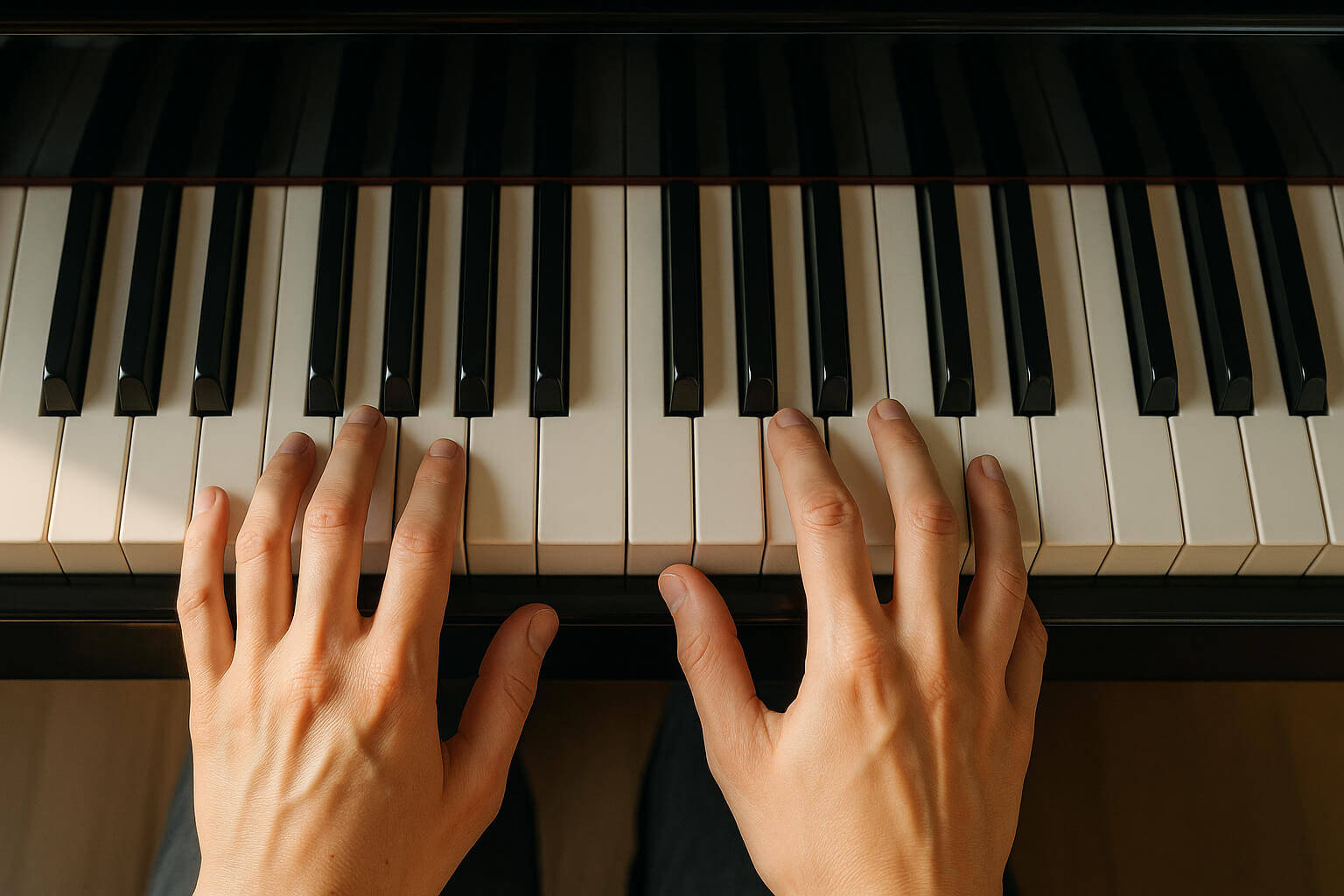August 13, 2025

Practicing scales on the piano isn’t just a technical exercise—it’s one of the most powerful habits a pianist can develop. Whether you're just starting out or you're working toward advanced repertoire, scales help build finger strength, coordination, speed, and music theory fluency.
Here’s how to make your piano scale practice both efficient and musically enriching.
At first glance, scales might seem repetitive—but they lay the groundwork for everything else you’ll play. Most Western music is built from major and minor scales, and understanding their structure helps you:
If you’re new to reading music, start by reviewing this beginner-friendly guide to musical notation, rhythms, and symbols, which explains how scales are notated and how they form the basis of melodies and harmonies.
Speed comes from control—not rushing. One of the most common mistakes beginners make is trying to play scales too fast too soon, which leads to sloppy technique and poor muscle memory.
To build speed the right way:
Tools like the Soundbrenner Metronome or the TonalEnergy app are excellent for this kind of measured progress and can provide real-time feedback on rhythm and pitch stability.
Mastering each hand on its own ensures you're not overwhelmed by coordination challenges. Start with:
Once each hand feels confident and relaxed, combine them at a slow tempo. If you find your fingers getting tangled or fatigued, revisit this finger strength and dexterity guide, which offers exercises specifically for pianists.
Each scale has an optimal fingering pattern—developed to make transitions smoother and consistent across different keys. Incorrect fingering early on can lead to bad habits that are hard to unlearn later.
A few best practices:
Even if a scale feels awkward at first, proper fingering will make it effortless with repetition.
Playing scales in straight, even eighth notes can get boring quickly. Spice up your practice and build musical versatility by:
This not only keeps practice interesting but also develops expressive control, which is vital when playing real music.
Don’t isolate scales—make them musical. Try:
If you want to take this further, consider exploring how to record and analyze your improvisations using a digital audio workstation. Recording your scale-based ideas can help you track progress and get inspired by your own creativity.
Consistency is the magic ingredient in effective practice. You don’t need to spend hours on scales—10–15 minutes a day is enough to see results if the practice is focused.
Tips for consistent practice:
Over time, you’ll find your fingers automatically navigating the keyboard with less conscious effort—and that’s the true reward of scale practice.
Stay up to date with the latest tips, expert insights, product reviews, and step-by-step guides to help you grow, create, and succeed—no matter your industry or passion.